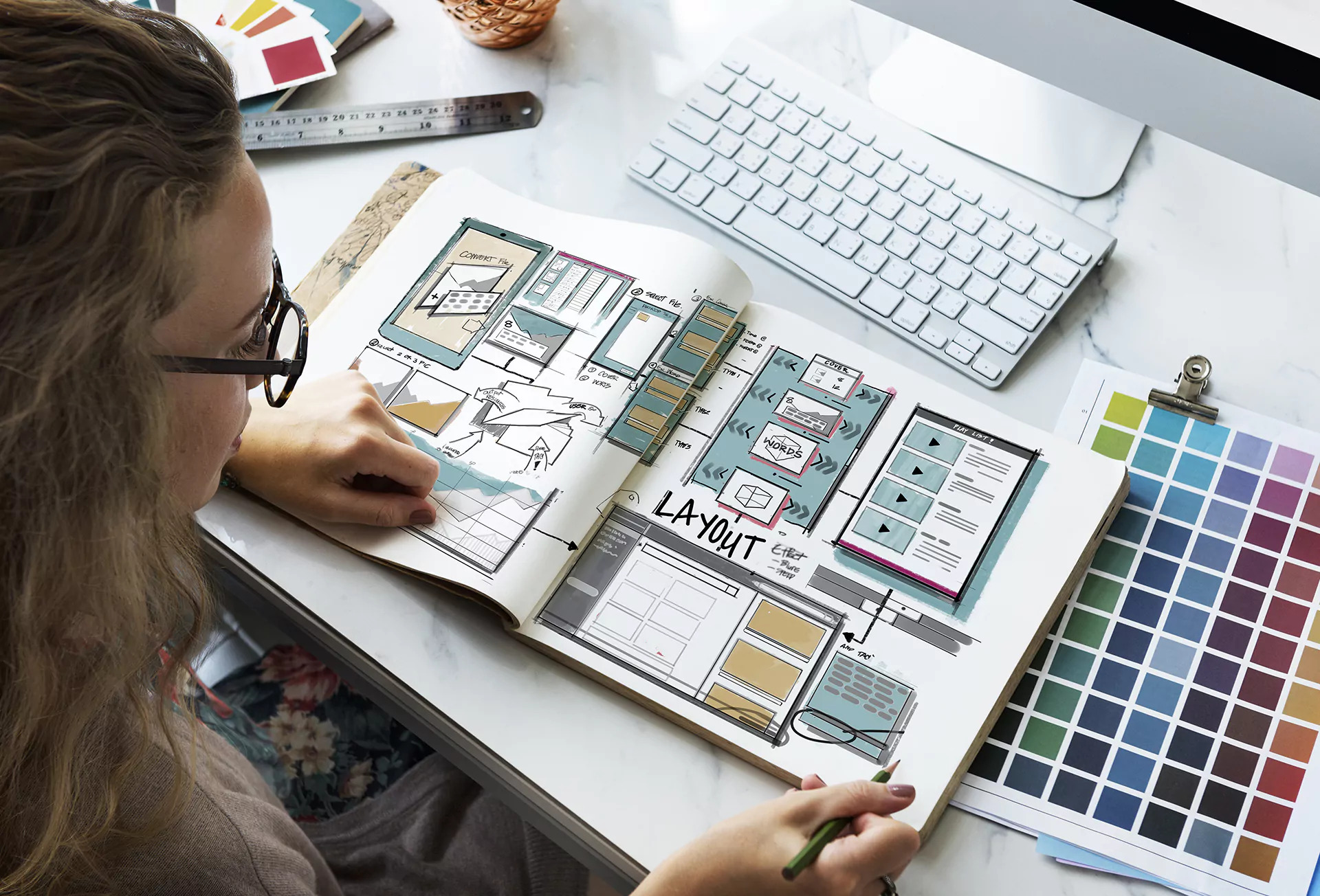
What is Grid Layout Design and How Does It Operate? A Manual with Illustrations
The elements are arranged in a structure, according to the definition of design. There is typically a specific system for a visually pleasing design. It depends on human vision and geometry. To function at their best, each component needs to be relevant, well-balanced, and easily observable. Although seasoned designers naturally follow the guidelines in their work, grid layout design is a thorough and all-encompassing method that can aid in the design process.To get the finest outcomes in less time, designers use grids to organize and simplify their work. We spent a whole post outlining grid layout concepts and guidelines for your benefit.Arounda is a multi-talented firm that designs products.We create excellent products for Fortune 500 corporations, startups, and businesses. Our staff is pleased to provide their knowledge and experience to help you sell more of your items.
A Grid Layout Design: What Is It?
A structure composed of lines and columns is called a grid. It establishes the overall arrangement of all design components, including headings, text blocks, and illustrations. Columns, gutters (column spacing), and margins (framing space) are the three primary parts of any grid. A grid layout design is the kind of layout design that uses grids.In the beginning, graphic designers created printed or handwritten goods (such as books, periodicals, etc.) using grids. Grid layouts are now a common tool used by UX/UI designers because of its benefits for structuring interface designs. We create excellent products for Fortune 500 corporations, startups, and businesses. Our staff is pleased to provide their knowledge and experience to help you sell more of your items.
A Grid Layout Design: What Is It?
A structure composed of lines and columns is called a grid. It establishes the overall arrangement of all design components, including headings, text blocks, and illustrations. Columns, gutters (column spacing), and margins (framing space) are the three primary parts of any grid. A grid layout design is the kind of layout design that uses grids.In the beginning, graphic designers created printed or handwritten products using grids. These days, grid layouts are a common tool used by UX/UI designers because of their benefits for structuring interface designs.To convey their thoughts, designers can either create a new grid for every page or utilize the same grid system throughout the entire design. Additionally, users can apply pre-made grids to save time and effort, or they can design the grid themselves.
Grid Types
All goods, even the most basic Word documents, have grids because they organize elements inside a page or screen. Most layout editors have special capabilities, such as "snap to grid," for this purpose.
Grid for Manuscripts
Manuscript grids are typically huge rectangles that are the size of a page and contain both text and illustrations. They are both the oldest and the most basic.These days, many documents and publications containing a lot of text, including documents, e-books, and PDF files, employ manuscript grids, which are one-column grids. Our blog, for instance, features a manuscript grid layout among other grid layout design samples.advantages of the manuscript grid layout over other grid types. Even if some components, like a form or a picture, extend beyond the edge, this grid keeps the composition well balanced.
Grid of Columns
Newspapers and magazines utilize column grid layout designs to arrange material in columns. It facilitates reading lengthy texts. There are typically between two and six columns. Additionally, because the elements are organized into columns, the reader may quickly scan the entire page. Websites like blogs and online magazines may provide suggestions for column grid layouts. Text and images are positioned in column grids using flow lines and vertical lines.To add adaptability and depth to the design, images can be arranged in a single column or across two or more. Throughout the entire document, the gutter should remain consistent and in proportion.There exist asymmetric grids at the same time. A symmetric grid will have all of its columns the same width, whereas an asymmetric grid layout design will have some columns that are proportionately thinner or wider than others. This asymmetry, which is also frequently employed in periodicals, gives the design a more casual feel.
Grid in Modules
Similar to checkerboards, the modular grid pattern style allows for the easy display of multiple items at once.In modular grids, each module has the same size and significance. For instance, modular grids can be used to efficiently put out timetables, charts, and forms, among other grid layout concepts. For this reason, e-commerce websites heavily utilize this grid to display the products for sale. Additionally, the layout of the phone's homepages with all loaded apps uses a modular grid. Additionally, some social media apps display the feed in a modular grid.
Grid Baseline
The text lines, known as baselines, define baseline grids. This one gives any design with a lot of text a nice reading cadence. For this reason, school notebooks are among the most common instances of grid layout design. Since all of the aforementioned grid layout concepts feature the same text lines with a flowing rhythm, they can also be used as baseline grids. However, baselines are used in the typographic design of both digital and traditional publications, newspapers, and posters.
Grids with a hierarchy
Websites are the main use for hierarchical grids, which arrange material based on importance. An element's importance increases with its size. The optimal user experience and conversions are made possible by a website with a hierarchical grid layout design.The expertise required to put up a balanced hierarchical grid without a modular guiding grid requires years of practice. To save effort, even seasoned designers utilize pre-made templates. Because of this, web designers create templates for websites that non-web designers can use.

Comments 0